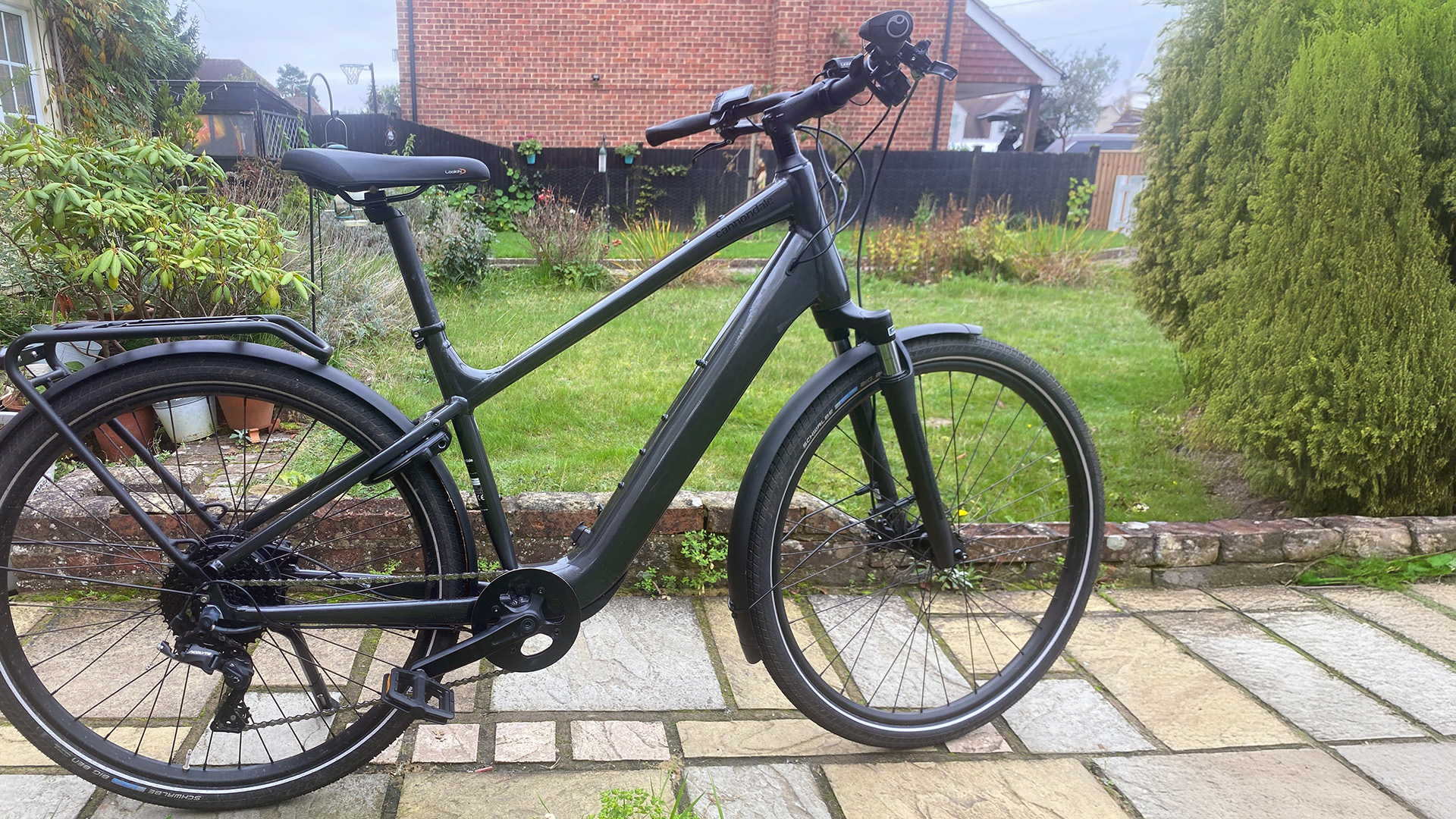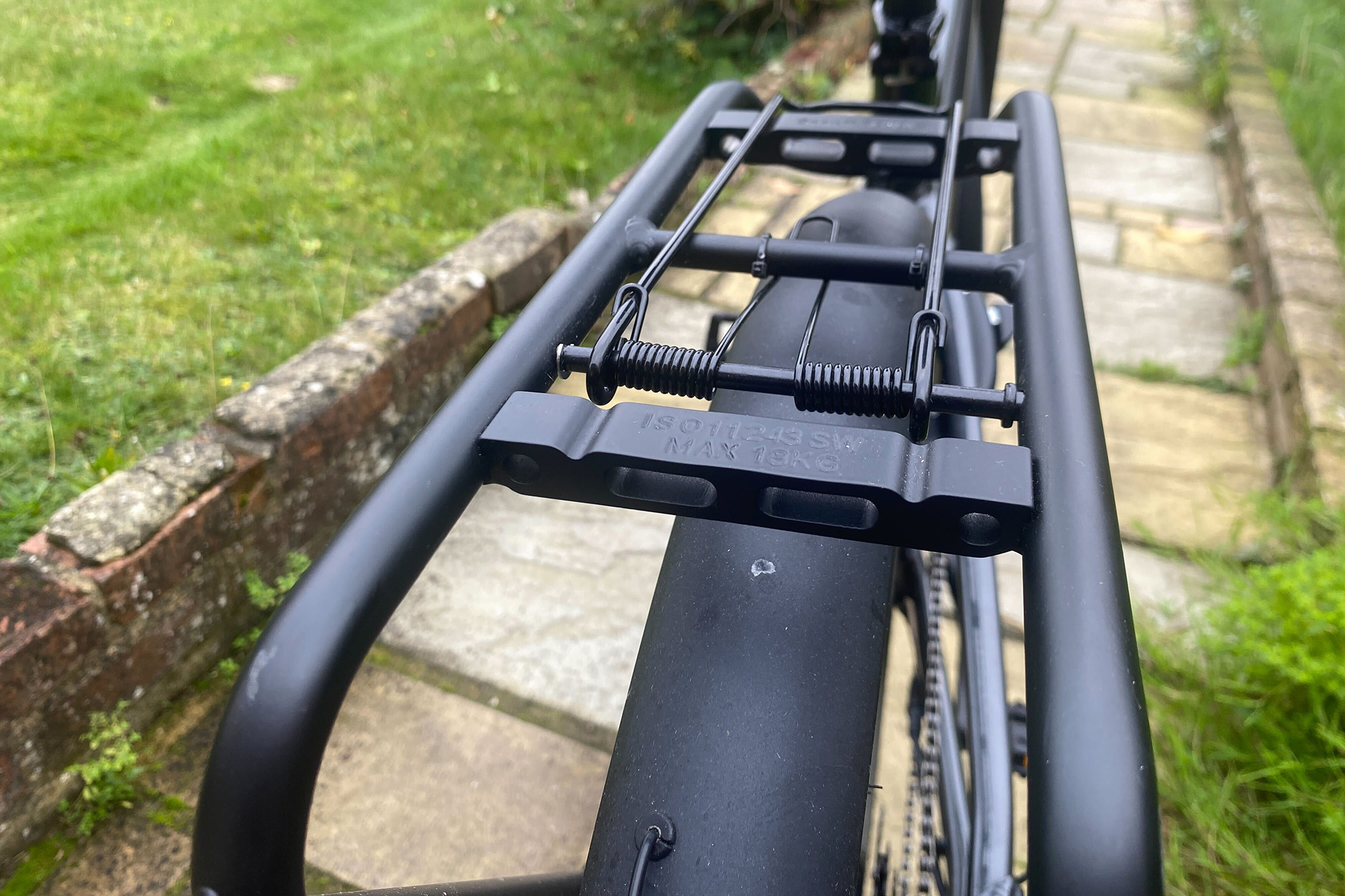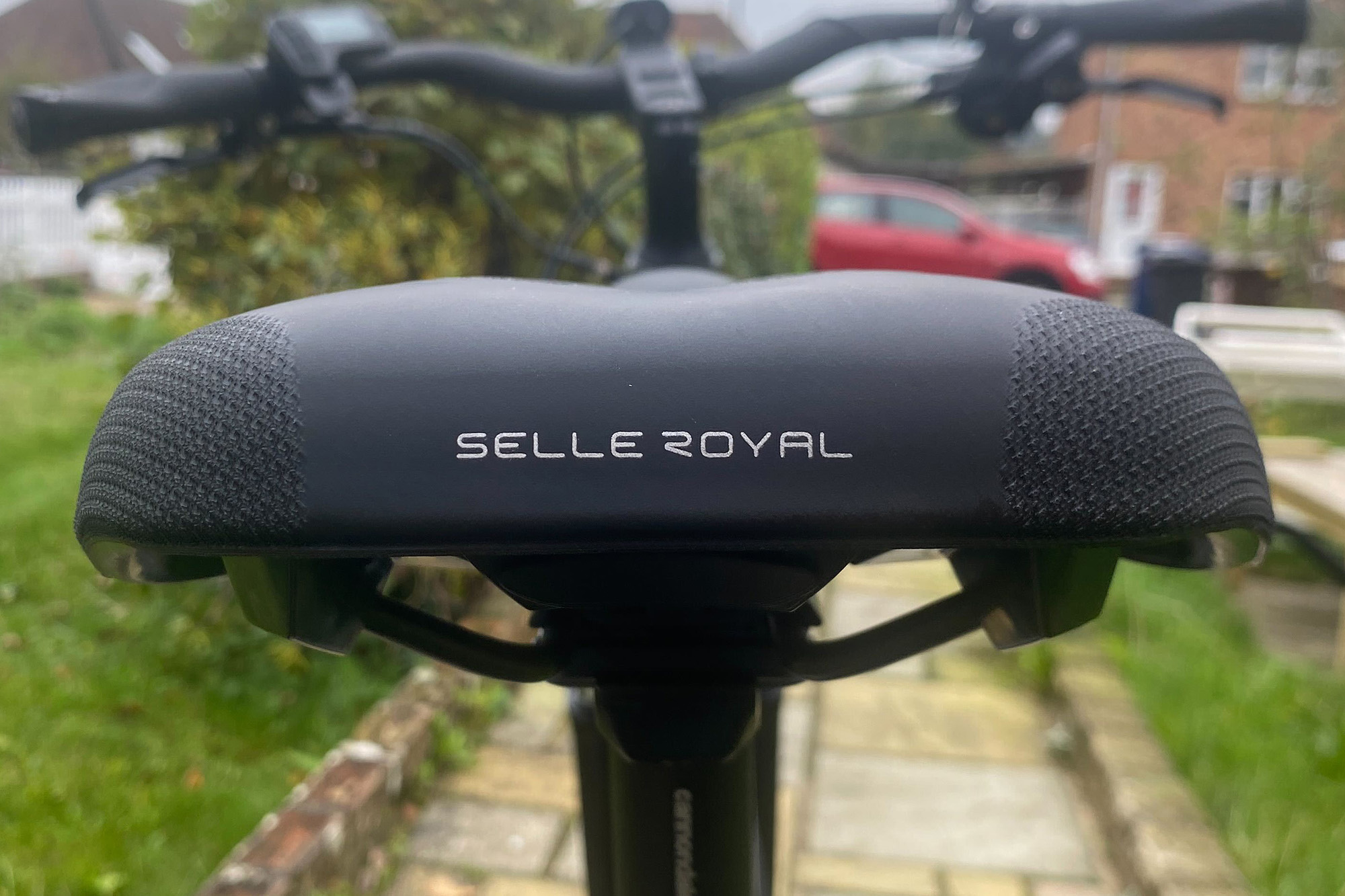
Much like the speed of the steeds in question, commuter-style e-bikes are infiltrating our city centres at a slow and steady pace, very gradually earning precedence over cars. Therefore, a considerable niche in the modern bike market has been carved out for casual cyclists looking to save money on fuel or congestion charges while getting fit in the process. The Cannondale Mavaro Neo SL 1 is one such bike, and its competitive price point doesn’t detract from a dizzying array of features and a surprisingly solid spec sheet.
Construction

“Sweat free urban rides” promises the coverline, and a quick glimpse over the frame suggests that’s exactly what you’ll get from the Cannondale Mavaro Neo SL 1. An 18 kg rated rack brings up the rear, and frame bosses abound on an aluminium frame, creating a bike that looks custom-built for a trip to the supermarket or a city commute. It boasts rigid front and rear fenders/mudguards – sagaciously specced for those who want to arrive at work without sporting half of the commute on their back. Present too, are front and rear lights, the former a Lezyne Pro E115, which is a quality piece of componentry and encourages confidence about the rest of the build. The SL suffix – Super Light – though, isn’t merited. At 24kg, the Mavaro isn’t light, in fact, on the e-bike weight spectrum, it’s leaning towards the more portly end of the scale. However, for now, we’ll give Cannondale the benefit of the doubt – city commuter bikes are never going to be on the radar of weight weenies, so for now, this indiscretion gets a pass.

The drivetrain features Microshift’s eight-speed derailleur which provides a wide enough range to find optimum cadence in most urban settings. It’s a budget set-up and keeps the overall price down, but shifts were sure if not seamless, and there’s even a clutch rear mech present to mitigate chain-slap. Brakes are hydraulic so modulation is sorted and absolute stopping power, even when taking into account the considerable heft of the machine, is dialled – which, during rush-hour commutes, could save a red face and a broken spoke or two.
Up front an SR Suntour fork with 50mm travel has been specced – enough to soak up most potholes or imperfections. Alloy rims decked out with Schwalbe Big Bens provide an extra layer of comfort, as well as offering a good level of puncture protection courtesy of added Raceguard technology - essentially a double layer of nylon situated below the tyre tread.
The saddle is a Selle Royal – a commodious perch which goes some way to adding compliance to the rear, and the handlebar is an in-house Cannondale riser, giving the bike a silhouette not dissimilar to a classic Dutch sit-up and beg. Lastly, there’s an Abus 4650 XL ring lock, which, for a city commuter-cum-city bike is always going to be worth its weight in gold.
A Bafang rear hub motor takes up the heavy lifting duties here – indeed such motors are often found on e-bikes of this ilk. The Mavaro has been assigned 350 watts, while the 360wh Darfon battery integrated into the downtube is claimed to be good for up to 67 miles on a single charge.

The ride

My first outing on the Mavaro Neo SL 1 was an eight-mile round trip to the shops. I only had a few bits and pieces to get, the weather was unseasonably fair and I’d been festering in the office all morning - time to rouse the legs and get some blood pumping. The hardest part of the entire trip was manoeuvring the bike from the shed to the front of the house – a series of 10-point turns ensued just to get it pointed in the right direction. Indeed such is the weight of this machine that lifting it should only be undertaken if you’ve done a pretty comprehensive warm-up, or you’ve just had your Weetabix and your name’s Arnold Schwarzenegger.
Once out on the road though, with the motor engaged, the Mavaro offered a planted ride. Aided by 350w, it’s reasonably quick to reach its capped assisted speed of 15mph on flat terrain. Given the bike’s weight, unless you’re going downhill it’s unlikely you’ll ever go any faster than this. No great shakes when you’re going to the shops in a shirt and a pair of jeans.
Bungee cording my shopping onto the rear rack, the return leg was just as sedate and I never felt over-burdened. But then I had to wrestle the Mavaro back into the shed - cue, a little bit of cursing and a grazed shin.

Next on the agenda was to ascertain the strength of the motor system. Locating the steepest hill I could find – a mile long with sustained sections of 20% – I made sure my heart rate monitor was charged and ready to receive a serious beating. Surely the weight of the Mavaro wasn’t conducive to an easy spin to the top. Not a bit of it. Even the most precipitous parts of the slope – with the third and highest motor setting deployed, along with the lowest gear – barely bothered anything beyond ‘warm-up’. Only when my foot slipped off the pedal (the large platforms have little grip and did become slippery when wet) did my BPM hover around the realms of an aerobic reading. It’s definitely not the most powerful of motors, but in my opinion, it has been correctly specced – anything more would add unnecessarily to the price tag.
Toggling through the three power levels – matter-of-factly referred to as one, two and three – is simple and there’s even a boost paddle which offers a short burst of power that I found particularly helpful when pulling away from junctions.
After these two rides - the second of which was some 15 miles and ridden exclusively in the highest power level - the battery life had been reduced by a third. This suggests that if you’re canny with the power you use and don’t go up too many 20% slopes, the battery life should be good for Cannondale’s claimed 67 miles in one charge.
Value and conclusions

The Mavaro Neo SL 1 is a good bike rather than a great one, but it is well-conceived with its many commuter-friendly features, such as fenders, lights, rack and lock. To be fair, the primary criticisms we do have - namely, it’s heavy and slow - could be levelled at much of the competition too. At £2,400 it is very well priced but it’s about to become even better value.
As we were finishing this review, Cannondale refreshed its Mavaro line. The new bikes are already available in the US and should be coming to the UK in spring 2025. However, we do know that there’s still plenty of stock of the old bike – the one reviewed here – in the dealer network. So, expect to see some heavy discounting and favourable deals over the next few months.
Specs
- Frame: SmartForm C3 Alloy, integrated down tube battery, internal cable routing, tapered head tube, 18mm two-bolt kickstand mount
- Fork: SR Suntour NEX custom crown, DS, 50 mm travel
- Motor: Bafang G020 Hub, 350W
- Battery: Darfon, 360Wh
- Tyres: Schwalbe Big Ben, 700x50c
- Cassette: Microshift, 12-42t, eight-speed
- Rear Derailleur: Microshift Acolyte
- Shifters: Microshift Acolyte, eight-speed
- Handlebar: Cannondale Riser, 6061 Alloy, 8° sweep, 4° rise, 680mm
- Brakes: Tektro HD-275 hydraulic disc, 160/160mm rotors
- Brake levers: Tektro hydraulic disc
- Saddle: Selle Royal Lookin Trekking
- Seatpost: Cannondale 3, 6061 Alloy, 31.6x350mm







